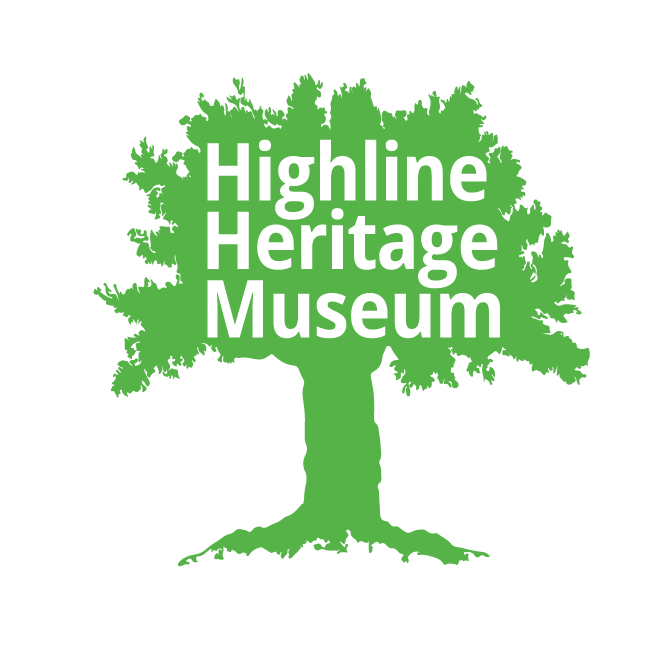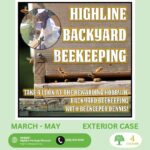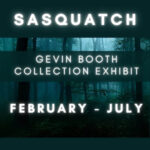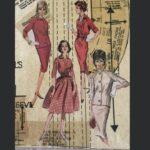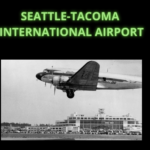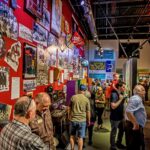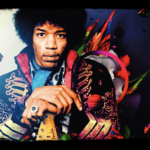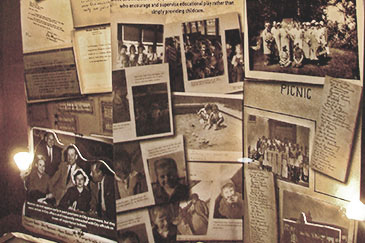Interview with Carolyn Williamson
October 30, 2002
Interviewer Gene Pugh
We moved to Normandy Park in 1951 or 52, but we lived in Seahurst before that.
My husband, Bob, grew up in Seahurst. His parents came there in about 1915 and there were only about 15 families there at the time. There was woods all around and cougars!. They built two houses, he built them himself. One of them was at SW 149 Place. And then another at 14410 24th SW, is now owned by some friends of ours. I think that area was probably just opened up as a development at that time. There was an archway at 152nd just before it turns to go down to Three Two Point.It had pillars and an arch designating “Seahurst Park” I do remember seeing the arch. The family lived in Illinois and Pennsylvania before.
Bob went to Highline High School and graduated in 1937. I think I have pictures of the football team and the old houses that he built. The houses are still there.
Bob’s dad was at Boeing when he first moved out. At that time it was just a little building. He was not there very long, but the knew Allen who was president. They lived in Seahurst. He didn’t stay long but moved on to and stayed there for the rest of his career.
I met my husband when I was going to the University, and he was there. It was right at the beginning of World War II. He was studying engineering and working his way through school. He was deferred because he was working at Boeing. I was majoring in English literature. We were married in 1942. We were married in Seward Park, where I grew up, at Brighton Presbyterian Church. We had an apartment in the University district. And then we rented a little house on Lake Washington. Then Bob wanted to go into the service So his dad had to go to Mr. Allen to get a letter releasing him. They wouldn’t draft anybody at Boeing. He went into the army at Fort Knox before the invasion of Europe. While he was away I was flitting around, to California and staying with my parents. I worked in a bank. Jobs were very easy to get because the men were all in the service. I can’t remember exactly what year he came back. You remember that they had “points” qualifying for discharge. He had so many points for being overseas, so many points for the length of service and so many points for the number of children you had. So the longer you’d been over there the more points you had, the sooner you’d come home. He didn’t have as many because he hadn’t been in very long.
When he came home we lived over on Lake Washington in a little tiny waterfront house. Then we moved to Seahurst. It was close to where his folks were living. It was at 149th and old neighborhood. His old neighbors were still there. Bob went back to school at Seattle U. Then he went to work for Seahurst Oil. Leo Thomas lived across the street.
We had a little tiny house at Seahurst. When our second boy was born we had to have a bigger house, so that’s when we built in Normandy Park. That was about 1952.
Normandy Park was just opening up. Nothing had been built during the war. And before that there was the Depression. So there were just the homes that had been built many years before. Then all the new ones came along after the war. The Leonards built our house, Art and Kenny Leonard and their father were the builders. They were excellent builders, built a lot in Gregory Heights.\
In Normandy Park there was a community club and they were having a big fight when we were beginning to build, over whether to put a sewer plant down there. People were on this side and people were on that side. There were all these stories that there would be a lot of honey wagons running by there. We didn’t know what side to be on, we got pressured from everybody. That’s how they happened to incorporate, way back there, because they thought if they incorporated they could keep the county ,or whoever ran the sewer plant, from coming in. so of course many years later they did build the sewer plant down there an it didn’t bother anybody, and it cost five times as much. It was a big to-do.
Noramandy Park is a nice community now, but it’s so big. There never used to be anyone driving down our street until they built the school, then there was traffic. I have no idea how many families live there now. I know when we built they ran into piles of old old clam shells, so the Indians evidently used our place for a garbage dump or something. It has always been a very good beach, good clamming. So nobody had lived on our property until we built. I don’t know of any Indian Trail in Normandy Park, but there is one that goes down from Seahurst.
Bob’s father was a great one for working with his hands, so he made a lot of the toys for their children. We still have a little table and two chairs and things like that. Bob’s mom was a great antique collector.
Bob’s father went to the university of Illinois, and I think he was trained as a CPA. Building was just a thing he liked to do with his hands.
Den Burien was the theater in Burien, there was no theater in NP. WE did a lot of shopping in Burien. We used to get fresh eggs from the Ironsides farm on 152nd. They didn’t have a store, just chickens. There was a Safeway on the Ironsides property later. I remember Bunge Hardware at the corner of 152 and Ambaum. Across the street was the Burien Drug Store. I can’t remember the owners’ name but we knew them. They moved later down to the south side of 152nd.There was a wonderful old store in Olde Burien where she just had everything. She had sewing things and all kinds of stuff. I think that was Jamie Whitley. She had things that you never could find anywhere else, cloth and patterns. Then there was the Colonial, a very nice store, which came in later. (ladies clothing). Velma Thomas and her sister had a children’s store which had really nice children’s clothes and toys, down near the Colonial. That whole block was kind of new. You could buy clothes in Burien. When we moved to Normandy Park the closest stores were at Five Corners. There was a little tiny store, Merricks’, across First Ave, where the service station is located now.
That’s where we got milk and things like that. Where QFC is located now there used to be a Tradewell, or something like that. There used to be Lehman’s hardware store. Logan lumber has been there a long time. There used to be a greenhouse back in there. It’s all changed now. And it’s hard to remember where or when.
There were doctors in Seahurst. The one we went to was on 152 at about 19th, and I think they are still there, different names, different doctors. I remember Doctor Hazeltine.
Seahurst used to be quit a commercial center. We went to Wrights’ grocery and Barney’s market. I may have some pictures. We only had one car and Bob took it to work. So I would call up and order my groceries and Bob would pick them up on the way home from work. They would do anything for you. It was where you went to see all your friends. Barney always gave the children a piece of baloney or something when we came in. At the gas station across the street they knew everybody too. The little strip mall on the south side of 152 didn’t come in until later. I think the first thing over there was the architect’s office. And Oh, the great post office! That’s where I go. I went to the Burien post office yesterday and stood in line. At Seahurst you can visit your neighbors while you’re standing in line. So I go to Seahurst. I don’t remember the lady’s name but she was there for years an years. I think she’s retired now.
The Highline Times is the only newspaper I knew. Jean Bus used to write the social page. We’d always read her column to see who was doing what and who with. It was parties, and who went where and who came back from vacation and all that. Bob’s mother always had a Christmas party on the Sunday two weeks before Christmas. They had a small house, but she would have about 200 people in and out at an Open House. Everybody loved her parties. She just invited all these people and it was fun. It was come and go. She just loved having those parties. And Jean Bus always wrote about them. I had to help her prepare for that. It got to be kind of a tradition.
Holiday traditions in Seahurst usually revolved around the churches. St. Francis Church was there but I don’t remember when the scool was built. The church that I belonged to , St Elizabeth’s, started in somebody’s house, in the Wiggins’ house. And then it moved to one of those little buildings near the grocery store. They called it the little brown church. And then they built the building where they are now. I’m pretty sure St. Francis was there at the time.
We were in the Seahurst area from the forties, until 1950. With Bob’s folks living there, we were right at home.
I don’t know about ball games except for the high school There used to be games, between teams in Burien and White Center, for instance, where Fred Hutchinson pitched. I knew FH because he went to the same high school I did., Franklin HS.
By the time our kids were ready for school, the Normandy Park Elementary had not yet been built. My oldest son must have gone to Sunnydale for the first grade. We had to drive them. There was a Mrs. Lonheim teaching kindergarten up at the John Knox Church, a private kindergarten. Then he must have gone to Normandy Park when it was new. Kindergartens were not in the schools. I worked hard on the push for kindergartens in the schools. We worked awfully hard for schools under Carl Jensen. Normandy Park school building is now the location of city offices. So now the children in the area have to take a bus to Marvista.
Bob remembers the street cars because his dad took the streetcar downtown to work. I think it went to about 152 and Ambaum. After that there was a bus which stopped at 152 and 22nd SW. It did not go to Normandy Park. There’s never been a bus to NP except on First Ave South. You need a car.
Normandy Park used to have dances on New Years Eve. They used to have Santa Claus come to the Cove. You could take the kids to Santa to tell him what they wanted for Christmas.
The community club met probably four times a year. But they have dances. My grand daughter is going to have her wedding there—next September, a whole year away—and we just barely got there in time to sign up for her date. People really do rent that place, not only the community. The renting pays for the upkeep on that building. I was amazed, had no idea they rented it so much. It’s a lovely place for a wedding, and it’s a good thing she got there in time to book it for her date.
I have hobbies: geneaology and gardening. I enjoy the art museum guild. No, I was not a charter member. There used to be a music and arts
association which had artists performing
When we were living in Bellevue there was a terrible storm, but Bob worked for Seahurst Oil I think it was 1949. The snow blew. And they lost an oil truck. They just couldn’t find it. I suppose it got stuck down some street and when it snowed it got covered up. I don’t know! It came out all right, nobody was hurt or anything, but he didn’t come home all night. He had to bring oil to people who were freezing. I don’t know HOW you
could lose an oil truck.?
I grew up in Seattle, Seward Park area. We kids played in the back yard..just played outdoors. We played all the kids games. My sister always made fudge on Sunday afternoons. It was the routine. We went outdoors to play and came home for meals. I made my bed and cleaned my room, did the dishes and dusted. Women’s work. Bob had to help his dad by handing him the tools. He thought that was so dull, just to sit up on the roof and help just by handing him the tools. He wasn’t allowed to hammer or anything. Bob had horses, he had a burro, Sheila. His brother had fitches, little animals, that were brought back from Mexico. Then his mother got two lambs one year. They decided to get them to eat the grass. She was a great animal lover, probably thought they were cute.. But then they grew up, Abner and Abigail, to be great big sheep. Abner butted her in the behind one day. Well, that was the end of the sheep. They took them back to the farmer who gave them to her, and gave them back. But they had tethered them out in the grass and they really did keep it cut. She was a great animal lover. She raised kerry blue show dogs. They have curly gray hair. She traveled all over, to Vancouver an Portland, to show the dogs. I didn’t know her then.
There was a big fire in the neighborhood. Ivan Phillips was called to come with the hose. I can’t remember if he ran out of gas or couldn’t find the place, but he never did got to the fire. There were no fire hydrants, so I suppose they put it out with garden hoses or something. The Chases lived across the street and I think it was their house that burned. It was probably about 1925. They always told that story.
Bob worked in the summer for American Mail line to earn money for school. He was a busboy on a ship. I think that was on a passenger liner. He could go because his dad was with Standard Oil and could get him on.
His best friends or neighbors were: Charlie and Marie Howell, Eddie Ellis, Leo Thomas, Josiah an Maggie Thomas, Papa Grossman, Clara and Frances Chase.
During the Depression they were probably okay because his father did not lose his job. But, you know, everybody suffered in that.
The kids played around down on the beach and they knew about the Bootlegging…they knew about it, I guess. I remember them talking about rum-running. They kind of laughed about it, but they said they knew what was going on down there. I think they came from Canada. You could walk
